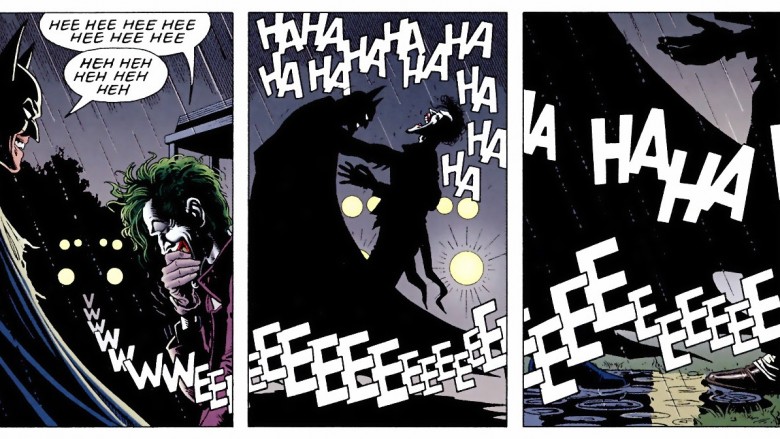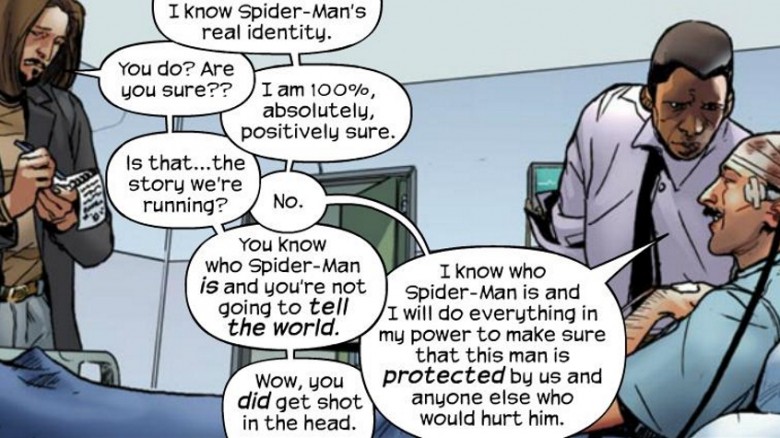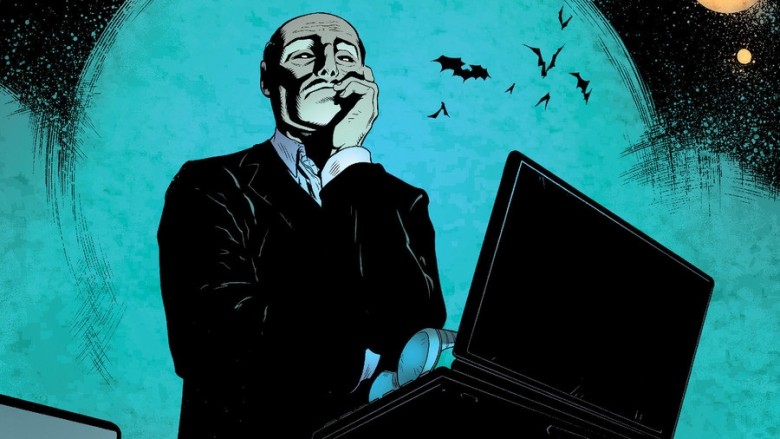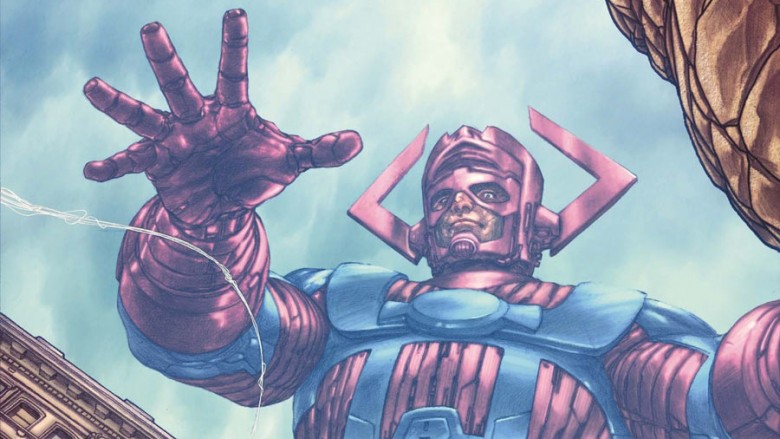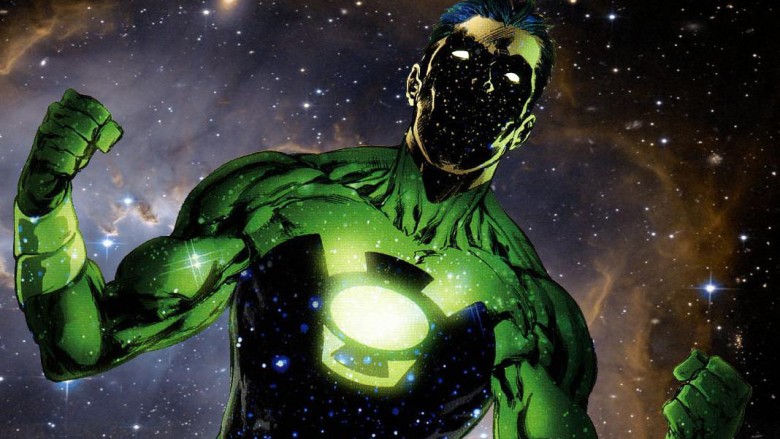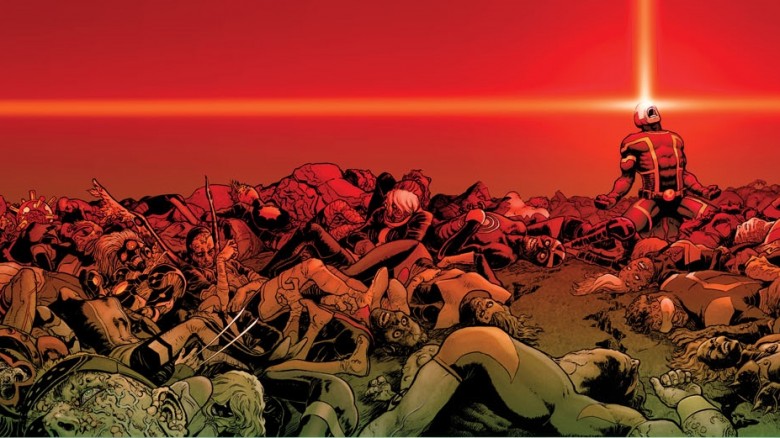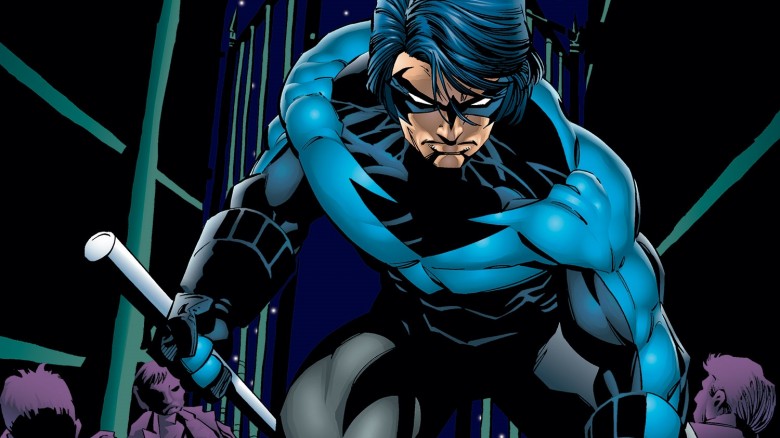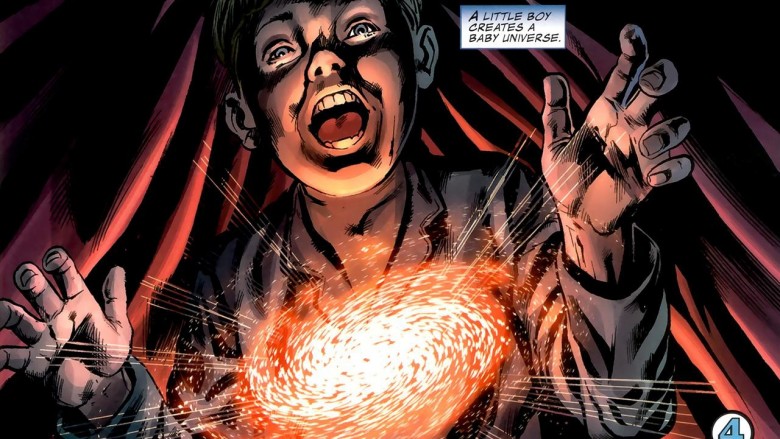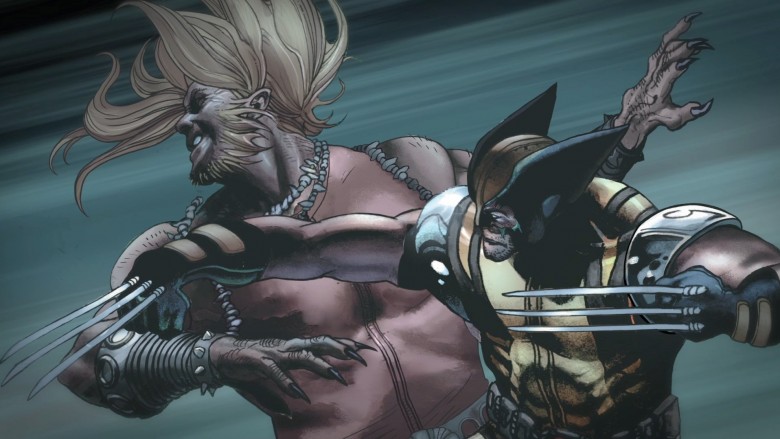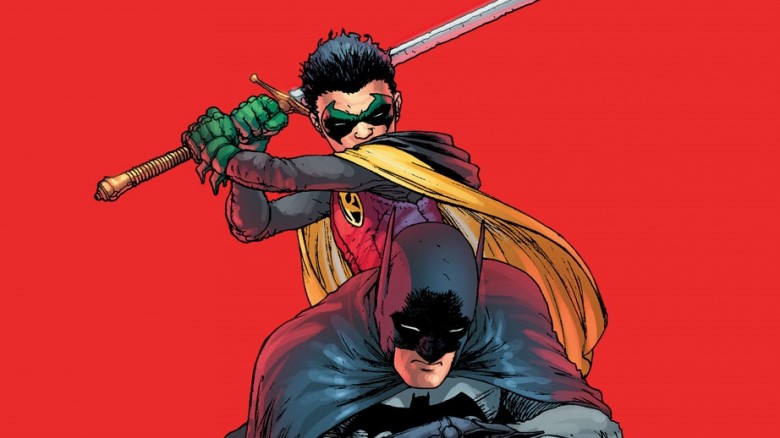Fan Theories That'll Totally Change The Way You Read These Comics
Without a doubt, comic book fans are in a class of their own—well, aside from Star Wars fans, Game of Thrones fans, Bronies, Beliebers...you get the picture. In any case, super-fans of sequential art are masters at reading between the lines and sculpting theoretical scenarios that are equally as creative as the comics. Some hypotheticals are best left for the tinfoil hat set, but others give some well-known stories a spin—if not realigning them completely.
Batman kills the Joker in The Killing Joke
Batman: The Killing Joke is one of the most acclaimed (and controversial) graphic novels of the past 50 years. Written by Alan Moore with distinctive art from Brian Bolland, the comic is based on the Joker's "one bad day" theory, which surmises that the thin line between the Clown Prince of Crime and Batman is just a single really rough rotation of the Earth. After escaping from Arkham Asylum, the Joker shoots and paralyzes (and possibly rapes) Barbara Gordon, before kidnapping and torturing her father, Commissioner Gordon. In the final panels, Joker tells—what else?—a twisted joke, as he and Batman laugh maniacally, before Batman clamps his hands around his adversary's throat.
Over the years, the book's notoriety has faded somewhat—at least until the 2016 animated movie (and DC's missteps in adapting it) brought it back to light. But since its publication, one popular theory (with some famous backers) suggests that the end of the villain's laughter signifies his death at Bruce Wayne's hands. If true, it gives the one-shot's extremely morbid tone an undeniably twisted ending—and it means the Joker was right: a horrible day is all it takes to turn a good man bad.
Moore's very viable point about the thin line between good and evil aside, if the Dark Knight has truly crossed the line, he's broken his own code of morality. After all, even the hellishly tormented Jim Gordon, suffering countless atrocities committed against him and his daughter, implores Batman to take the Joker down legally. In addition, the original script debunks this theory, even though the final edit leaves things more open to interpretation. In the long run, it seems to have more to do with letting readers decide who their ideal Batman is. After all, the Joker is still running around all these decades after TKJ. Death is no handicap in the comics.
J. Jonah Jameson knows Spider-Man is Peter Parker the whole time
Since his debut in 1963's Amazing Spider-Man #1, as Peter Parker's perpetually aggravated Daily Bugle boss, J. Jonah Jameson (the "J" stands for John, by the way), has had a hate-on for the Web-head. Despite his support of civil rights issues, his crusade against the "menace" of masked vigilantes has been a perpetual staple in the comic book world for decades. In particular, Jameson focused his attention on Spidey, which culminated in his ironic efforts to capture incriminating evidence on the man-spider via Peter's photos. But what if the adversarial newsman knew Spider-Man's secret identity the whole time?
A theory put forth recently on Reddit—but bounced around for years, if not decades—states that the longtime newshound is far too clever to fall for Parker's shenanigans. Here's this scruffy kid who normally brings him a sachet of bland if professional photos and all of a sudden catches mind-boggling close-ups of the high-flying wall-crawler in action (y'know, that Clark Kent sure looks familiar too). The theory reads that Jameson's crusade against Spider-Man is essentially a hoax to keep Peter—who he knows is a good kid in the long run—on his toes. Constantly criticizing Spider-Man and trying to out him makes Peter strive to be his best self, keeping Spidey from getting smug or losing his way and actually becoming into the menace J. Jonah always gripes about.
Well, it sounds good in newsprint, anyway. Marvel has played with the formula over the years, letting Jameson actually know Spider-Man's identity in the Ultimate Universe. As far as the Prime universe, though, every time the media mogul discovers Peter's true identity as Spidey, he gets pretty cheesed at his reporter, so...maybe not.
Batman is an elaborate fantasy world created for Bruce Wayne
Unless you've been harvesting Swiss cheese on the moon for the last seven decades, you're probably familiar with Batman. Millionaire orphan and industrialist Bruce Wayne by day fights crime by night as the Caped...yeah. With the help of his elaborate Bat Family of sidekicks, cohorts, and collaborators, he thwarts the menacing schemes, robbery plots, and Gotham City takeovers attempted by the Riddler, Two-Face, Egghead (okay, he's a little rusty), and the Joker. However, one elaborate fan theory purports that Bruce Wayne and his villain-thwarting alter ego are nothing more than an elaborate hoax perpetuated by the shareholders at Wayne Enterprises and his trusty butler Alfred Pennyworth.
The concept goes like this: following the deaths of his parents, Bruce Wayne leaves Gotham, and Wayne Enterprises suffers a drop in revenue as a result. The company's powerful influence in the city causes a recession, and the captains of industry convince Alfred to get young Master Wayne's brilliant mind back to lead the business. To manage his damaged psyche and vigilante tendencies, they concoct a scheme whereby Bruce dresses up as the Caped Crusader to battle hordes of actors in suits intent on battering the hell out of Gotham.
It's sort of a Truman Show-meets-Batman theory, and there are a number of compelling correlations, such as the Bat-signal being used to conduct Bruce to the proper "crime scene." It also explains the presence of several different Robins and Batgirls, Batman's ridiculously long winning streak, and even the reason no villains die in Gotham (or if they do, it's short-term). Of course, there are serious flaws with the theory. Most notably, how the "World's Greatest Detective" never deduces the whole scheme.
Galactus is really God in the Marvel Universe
Major comics characters are often inspired by real people or popular concepts. Sometimes the parallels are obvious, like the Mephisto-Satan link in Marvel, while other times the connection is implied, such as Malcom X-as-Magneto and Martin Luther King Jr.-as-Charles Xavier. Often, new heroes and villains come from mythology, such as interplanetary baddie Galactus. Marvel's First Family ran into the Devourer of Worlds in The Fantastic Four #48, when the team tried to stop the Eternal fellow from munching down the Earth (spoiler: they succeed).
This fan theory itself derives from a popular myth, which states that The Legendary™ Stan Lee told The Legendary™ Jack Kirby to "have the Fantastic Four fight God," or something along those lines. So Kirby created a vengeful purple planet eater with a penchant for elaborate hats—definitely sounds like God, all right. To be honest, soaring the cosmos in a Möbius strip-spaceship is pretty darn cool. Since other Marvel beings outrank him, though, such as the Living Tribunal and Lord Chaos, the pecking order extends well beyond Galactus.
As such, Galactus was likely meant as a being with godlike powers that, even to the remarkable Fantastic Four, would seem overwhelming. We still wouldn't mess with a dude that would use the moon as an aperitif.
Kyle Rayner created Flashpoint not Barry Allen
One of the most dynamic DC events—one that even a number of non-fanatic fans are aware of—is "Flashpoint," which the CW's Flash later adapted. The complex time-traveling event has a very basic and relatable origin: Barry Allen travels back in time to prevent the Reverse-Flash, Eobard Thawne, from murdering his mother. As a result, his father dies instead, Bruce Wayne is killed (with his father, Thomas, donning the cape and cowl instead), Atlantis and the Amazons are at war, and the Justice League never formed. No biggie, right? So Barry tries to put things right, but accidentally creates yet another divergent timeline, the New 52.
However, one fan isn't convinced that Barry is entirely responsible for rebooting the DC Universe. Their sprawling TL;DR theory lays out a very viable argument that the changes were actually the result of sole remaining Green Lantern, Kyle Rayner—yeah, he of the infamous fridge-death girlfriend. Rayner, who eventually became the omnipotent being Ion—before recreating and reformatting the Green Lantern Corps into its rainbow flavored and more emotionally charged format—was actually responsible for the bulk of the universe's changes. The theorizer feels he's the only heroic entity powerful enough to completely overwrite the past, present, and future without anyone else noticing for the most part. It's only when Barry tries to change his mistake that both changes came into conflict and split off into the wacky little New 52 experiment.
Phew!
Of course, the theory doesn't account for the mysterious hooded figure, Pandora, who also meddles with the Flash's time-diddling. There's also one major flaw: DC called their event Flashpoint, not Lanternpoint. Of course, the name could just be a smokescreen.
Marvel wanted the X-Men to fail
Marvel seems to have a love-hate relationship with the X-Men. Admittedly, the House of Ideas owes much of their success in the '80s and '90s—before the comic book crash, anyway—to the titular mutant squad. The animated series brought in scores of new fans to the comics, and their X-books from the same era are some of the best-selling comics of all time. The super-powered team proved their continued popularity when they transitioned to the big screen in Bryan Singer's 2000 movie X-Men, and its success spawned a massive franchise, helping to kick-start the modern multibillion-dollar superhero franchise.
The only problem: 20th Century Fox, rather than Marvel, owns the movie rights to the X-Men. Without the movie rights, which made Fox billions, the comics are small potatoes in comparison. As a result, many X-fans have grown suspicious that the House of Ideas has been trying to weaken the classic team in an effort to sabotage the movies and regain the rights (yeah, that'll work). The prevalent theory seemed to hold a lot of water, too: throughout the 2000s and 2010s, events like Decimation, or M-Day, drastically depopulated mutantkind. Later events like Avengers vs. X-Men and Inhumans vs. X-Men saw mutants villainized, on the run, and even facing extinction. Fan favorite characters like Wolverine, Professor Charles Xavier, Jean Grey (again), and Cyclops were killed off or relegated to unpopular roles.
Things looked particularly bleak for the X-Men until this spring's spell-checker anomaly: "ResurrXion." With the launch of nearly a dozen or so returning titles, Marvel doesn't seem quite so genocidal towards their mutant crew now. Heck, they seem to be embracing their longtime squad in a big way.
DC is keeping Nightwing down
With a DC Extended Universe presence recently established, Nightwing's star is on the rise. Long dwelling in the shadows, the current alter ego of Batman's first and most trusty sidekick, Robin, or Richard Grayson has seen somewhat of a renaissance in recent years. Grayson was the son of circus performers the Flying Graysons before his parents were slaughtered by Mafioso. Knowing the feeling, Bruce Wayne took the young orphan in and trained him as his colleague. Later on, although Nightwing has several origin stories, Dick essentially outgrows his Robin tights—or is shot by the Joker, or is inspired by or meets a similarly named Kryptonian hero, you get the idea—and strikes out on his own.
His similarity to his big-name mentor, however, fuels fan theories that DC was diminishing Dick's impact (urge to childishly chortle rising) in their overall universe. In theory, the Caped Crusader and Nightwing run along a number of parallels: they're both crimefighters who were orphaned by murder, as well as highly acrobatic and skilled detectives; they both conceal their identity behind masks and totally dig night-based winged creatures. Undeniably, after stints on the Teen Titans and Young Justice TV series, Grayson's second superhero identity has increased tenfold in popularity. Warner Bros. allotting Nightwing a big-budget movie is, in and of itself, evidence of the character's growing prominence in the DC pantheon.
But overshadowing Batman? Bats may have waxed and waned in popularity over the years. Still, with nearly 80 years of history, countless movies, TV adaptions, radio plays, toys, parodies, and comic book appearances numbering in the google-plex, only Superman and Spider-Man come anywhere near his universal appeal and recognition. If anything, you'd think DC would be stoked to have another Batman-like hero on its roster for the slow days in Bat-merch land.
Franklin Richards is the architect of the Marvel Universe
To put it simply, Franklin Richards is one of the Marvel Universe's most powerful beings. "Born" in 1968's Fantastic Four Annual #6, Franklin was quickly determined to be an Omega Level mutant, meaning he has potentially limitless powers. Since birth, he's tallied up quite an impressive list of feats, including beating the stuffing out of Mephisto (for all intents and purposes, Marvel's devil) not once but twice, resurrecting Galactus—who became his herald and good buddy, disrupting the time-space continuum by accident, and creating his own microverse on at least two occasions. Plus, he's basically immortal. Not bad for a uh 5, 7, 12, 26, 49, er, 8-year-old?
His incredible power set has led some fans to speculate about the boundless depths of Franklin Richards' abilities—even suggesting that he is responsible for creating and controlling the very universe every character lives in. The hypothesis actually makes a lot of sense, with a certain twisted logic. Before Franklin's birth, the Marvel Universe operated in real time, relatively speaking. In 1968, the year he was born, Marvel stunted real time, which has been reset on occasion—according to claims, because of the young'un's desire to never grow up. He also put together the Heroes Reborn pocket dimension to save his superhero friends after he saw them "die." Future iterations of Franklin are all immensely powerful—and he was even drawn as a hollowed-out construct, similar to abstract Marvel entity Eternity, in Fantastic Four Annual #1998. Yep, this little kid's got mad skills.
Recently, The Fantastic Four ended their comic run after Secret Wars, setting off to rebuild the Marvel Universe. Is it possible that Franklin is the key? Further, will he put it back to the way he likes it? The theory is a convenient way to explain the necessities of extended-life comics. However, if Marvel had allowed their heroes to age in real time, all of their characters would be saving the galaxy in walkers and wheelchairs by now—just imagine the Golden Girls as superheroes. Plus, if Franklin controlled the MU, wouldn't he have stopped his comic book from being canceled?
On the other hand, we believe you, oh powerful Franklin (may we call you Franklin? We're fine with Mr. Richards too). Please don't kill us.
Wolverine and Sabretooth are brothers
Wolverine and Sabretooth have been comic book enemies since, well, forever. James Howlett first cut through the pages of Marvel in 1974's The Incredible Hulk #180, while Victor Creed has been slashing his way through the Marvel Universe since Iron Fist #4 in 1974. Both have ties to the super-soldier development program, Weapon X, but wound up on opposite sides of the mutant fight—with Logan joining the X-Men and Victor signing up with the Marauders and the Brotherhood of Evil Mutants, although he eventually landed on Magneto's X-Men. In the past, Marvel has teased deeper blood ties between the two, even suggesting that Sabretooth is Logan's father—always ultimately dismissing any connections as delusion or nonsense.
The long rivalry, though, has caused some X-fans to posit along familial lines, believing the adversarial mutants are actually siblings. The theory suggests Sabretooth is actually Dog Logan, Thomas Logan's other son. Seeing as how both characters possess a similar superhuman healing power, heightened animalistic instincts, and look more than a little bit alike, the Logan brothers theory makes a degree of sense—especially since Sabes and Wolvie seem to have a really, really nasty sibling rivalry going on.
Their true nature is further complicated by hints about their relationship in the X2 X-Men United prequel comic, in addition to the lesser-regarded and now retconned X-Men Origins: Wolverine, which revealed that Logan and Victor are indeed half-brothers. Of course, the movie also gave the world Deadpool—the Merc with a Mouth—without a friggin' mouth. So we're not gonna put too much credence into that flick.
Robin is Batman's way to avoid turning evil
Even though Bruce Wayne has enjoyed a number of different personalities over the years, dark and brooding remains a fairly constant character trait. The death of a parent alone, much less both of them, is certainly an understandable reason to put on an upside-down smile and battle the underworld, as explored in numerous comics and especially DC's grim 1980s fare like The Dark Knight Returns and Batman: The Killing Joke. He also possesses a genius-level intellect and is a brilliant tactician, which has led some Bat-fans concoct a disturbing but viable rationale behind his decision to train the Boy Wonder.
If Batman understands how easy it is to cross the line from hero to villain, the theory postulates, he would feel the need to condition a like-minded but optimistic sidekick as a failsafe against his own dark side. Aside from grooming Dick Grayson and others as his replacement—which we know is never gonna happen, at least for long—Robin's extensive training sets him up as Bruce's Achilles heel. His sidekick is privy to all of his weaknesses and strengths, knows the location of the Batcave, and is familiar with enough protocol that he can subdue or kill Bruce.
Oh, sure, Batman could just be looking for an "old chum" to ease the burden, but that's more Batman '66 than Dark Knight.

